Laurent Nilles is an award-winning travel photographer from Luxembourg, whose passion is to capture the diversity of cultures all over the world with his camera. He travelled to the Ivory Coast earlier this year over Easter, a festive period in the country when people leave the cities behind to reconnect with their traditional culture in local villages.
Over two weeks, Laurent witnessed masked dances, traditional festivals and local ceremonies – including one involving a huge dugout canoe holding more than a hundred paddlers! Here are his favourite shots.
* * *
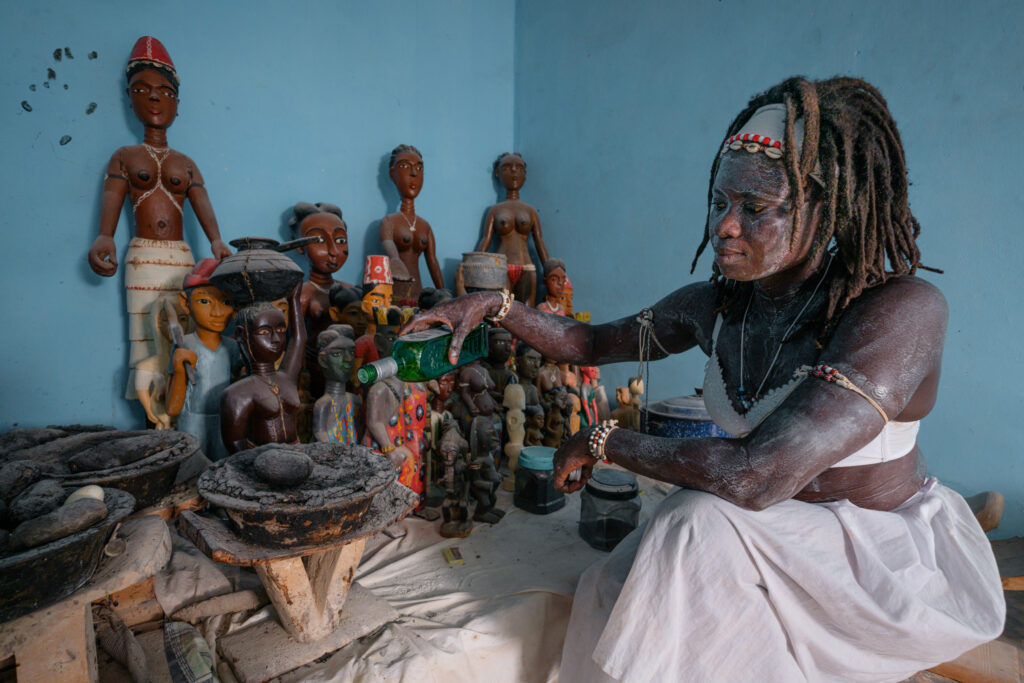
Hundreds of kilometres, thousands of potholes and a world away from the hectic buzz of Abidjan, where I started my journey, I arrived in Aniassué in eastern Ivory Coast, home to a unique training centre for apprentice komians – priestesses of the traditional Agni society, who immigrated from present-day Ghana in the 18th century, credited with important healing powers.
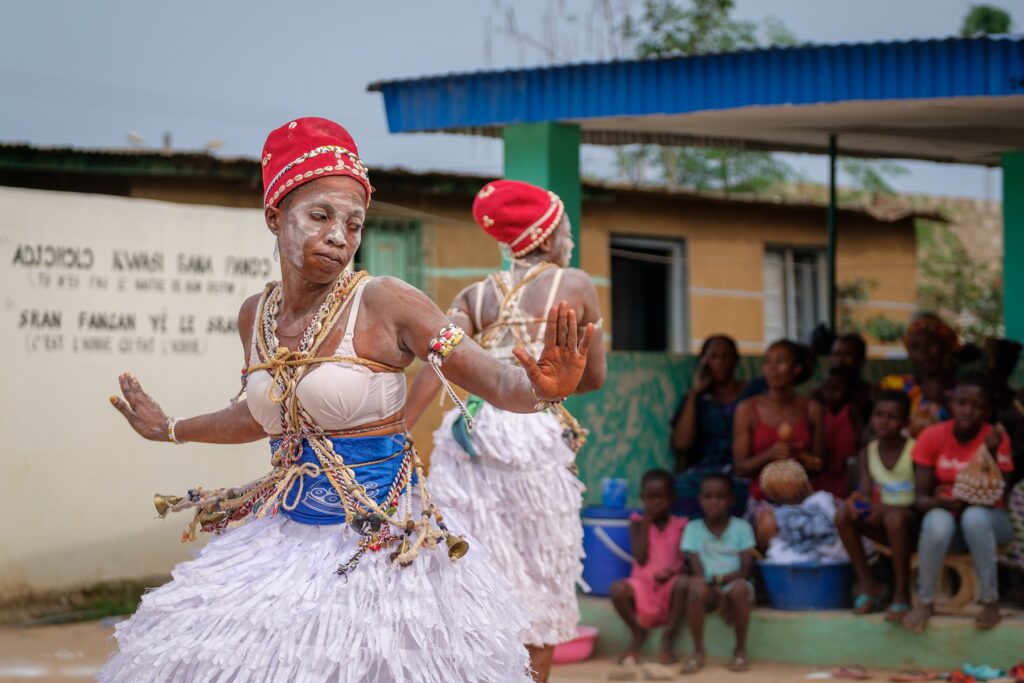
Maman Adjoua, the head of the school, explained how komians communicate with spirits and are called upon by the Agni in case of illness or personal problems, but also for important events such as the coronation of a chief or a king.
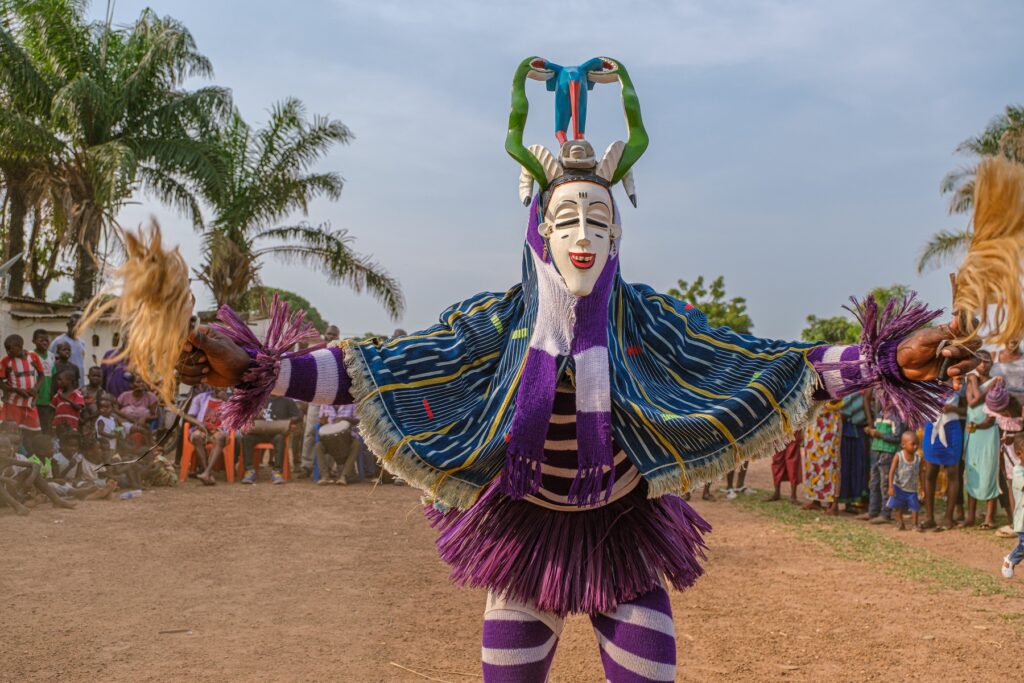
After a few days in Yamoussoukro, the country’s capital, a visit to the Guro people was next on my list. In the small village of Tibeika, a couple of hours west, I’m greeted by drumbeats, vibrant masked dances and an energetic atmosphere that entirely exceeds my expectations. This image is of the Zaouli dance, a tribute to feminine beauty. Dating from the 1950s, it was inscribed on UNESCO’s List of the Intangible Cultural Heritage in 2017.
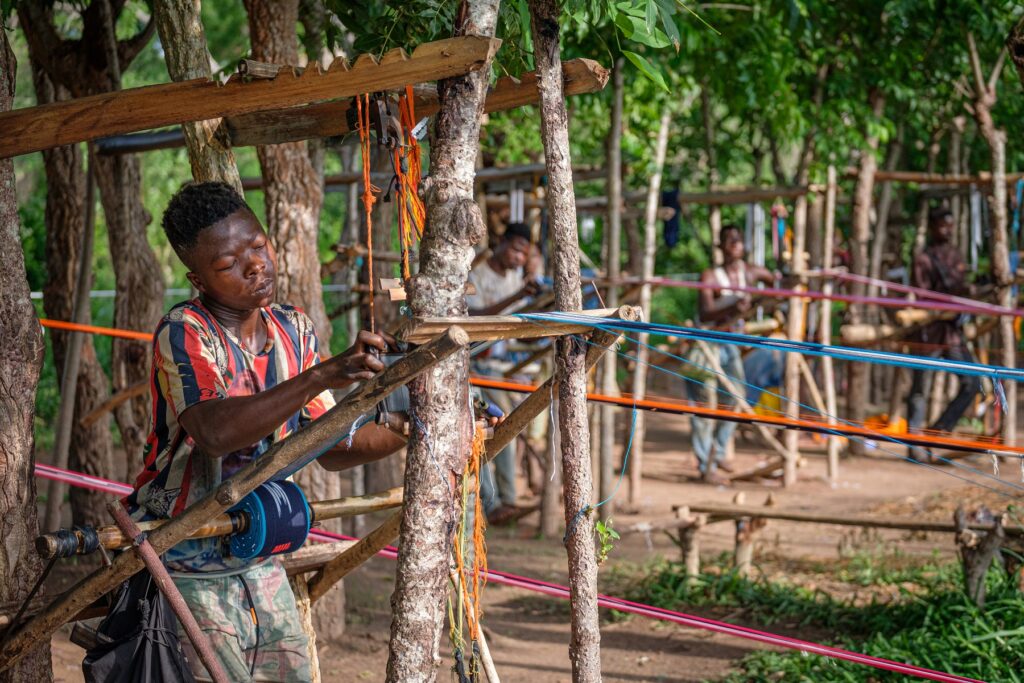
The next day, I stop at a couple of Baoulé villages on my way up north. The Baoulé are known as expert weavers and the unmistakable clicking of their looms can be heard in almost every one of their settlements.
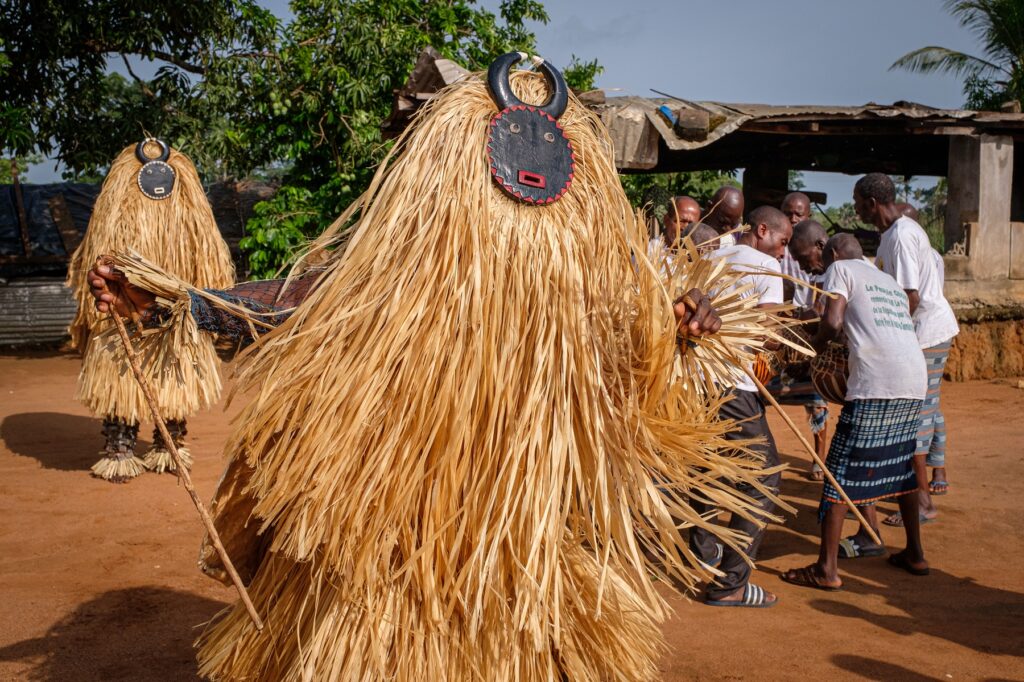
In Kondéyakro, one such Baoulé village, I witness the famous goli in which two dancers wear a variety of traditional masks. Up first is the horned, disc-shaped kpélé kpélé, followed by the kpan, a red-painted feminine mask that represents the goddess of the sacred forest who protects the village.
Incidentally, the goli masks have no eye holes or openings that allow the dancer to see. ‘This is not necessary, since the dancers are guided by the spirit of the mask,’ explained one of the attendees.
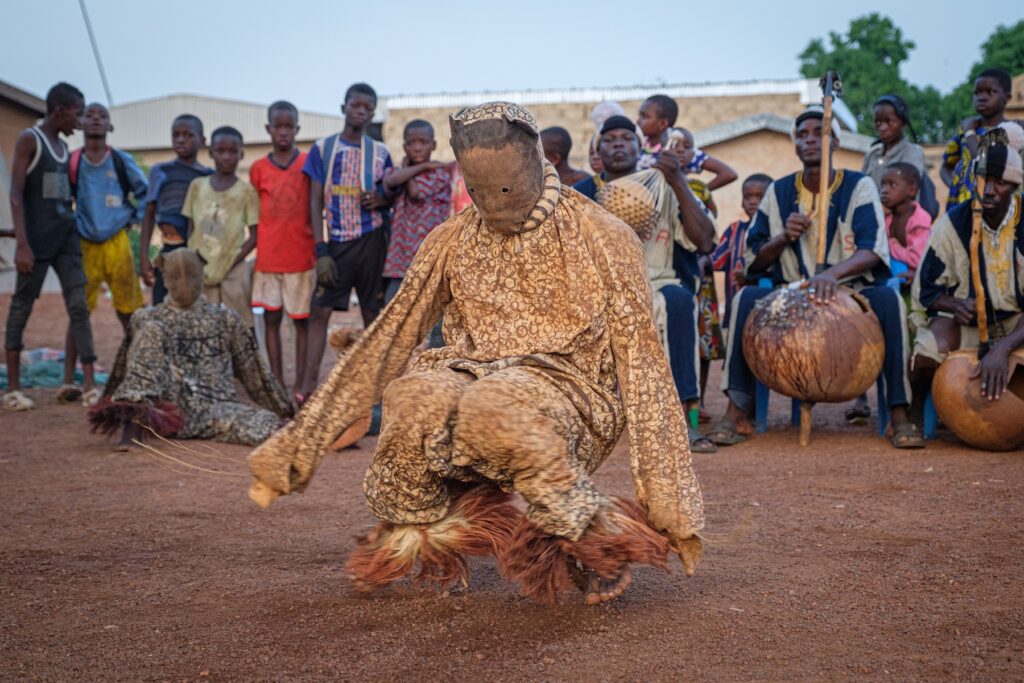
Aside from Islam, northern Ivory Coast’s social order is strongly influenced by Poro, a traditional male secret society that is still significant within Senufo life. The Poro initiation lasts for 21 years, divided into three cycles of seven years each, and most ceremonies are strictly reserved for initiates only.
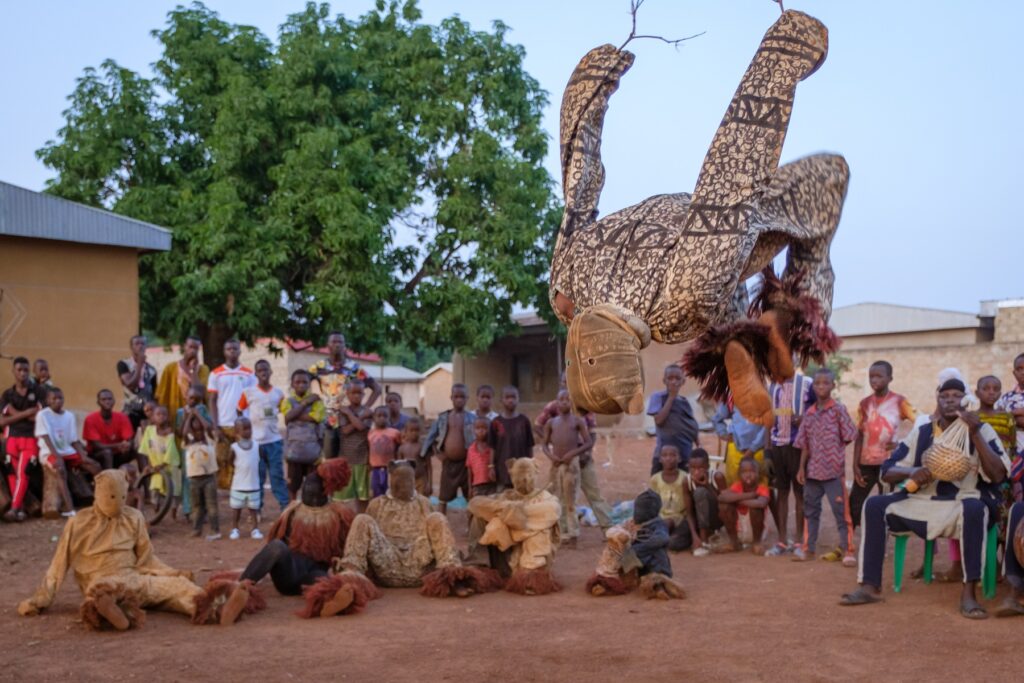
I was lucky enough to witness the Boloye, an initiation dance at the bottom of the Poro hierarchy that can therefore be performed in front of the wider public. The young performers (aged between 8 and 15 years old) turn impressive somersaults while holding a set of frail twigs in their hands. If they lose or break these, they are punished by being demoted in their initiation journey.
Their masks are not carved from wood, but consist of a sack-like costume, supposed to be reminiscent of the pattern of a leopard.
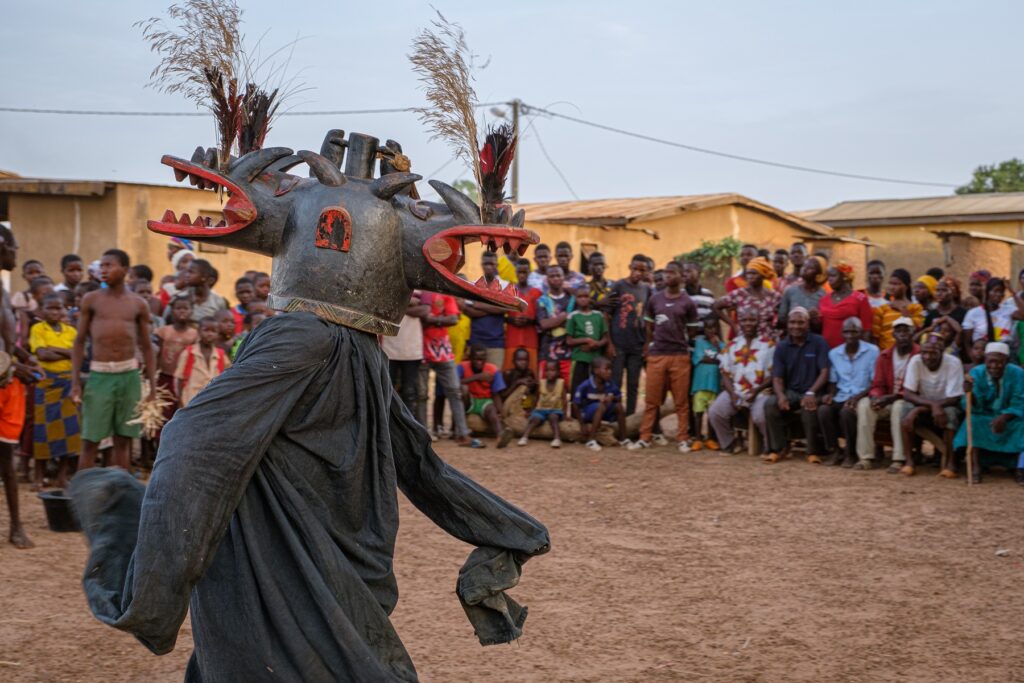
Access to other ceremonies, which are considered all the more sacred, was a rather more difficult task: my local contact’s negotiations with village elders in the run-up to my trip lasted several months, until I was finally invited to attend and photograph one of the Poro’s legendary Wambele ceremonies.
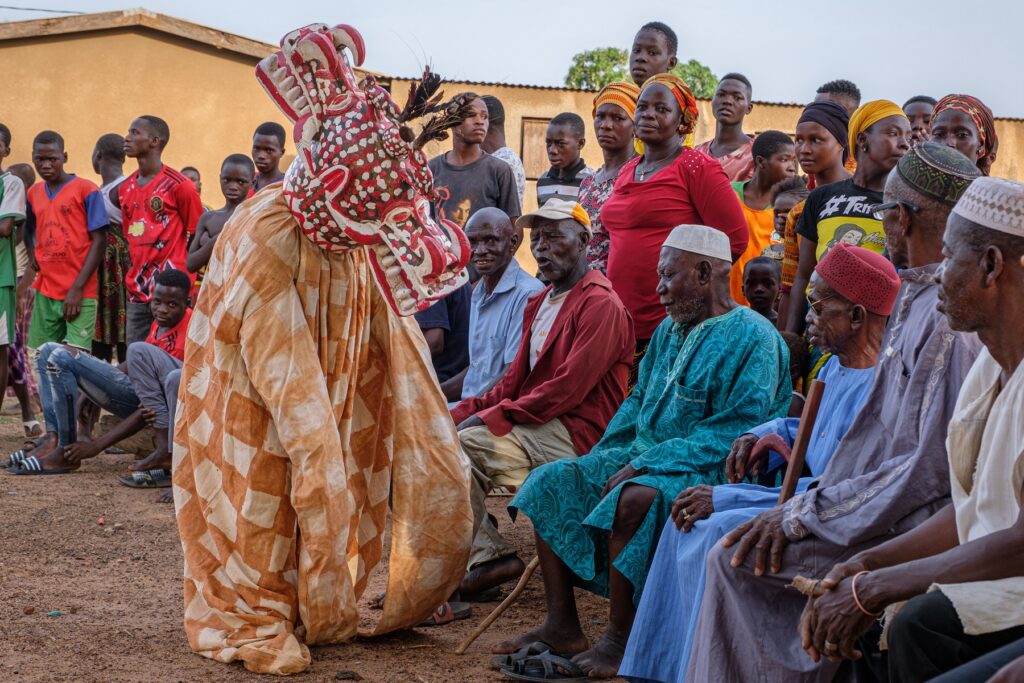
The Wambele mask wearers are highly respected and, one might say, even feared. With their two faces, each brandishing a set of fangs, they symbolise the opposite of good and evil – the spirits of the Wambele are supposed to protect, but they can also punish.
As I was repeatedly assured, witnessing this ceremony was a very special honour accorded to only very few outsiders.
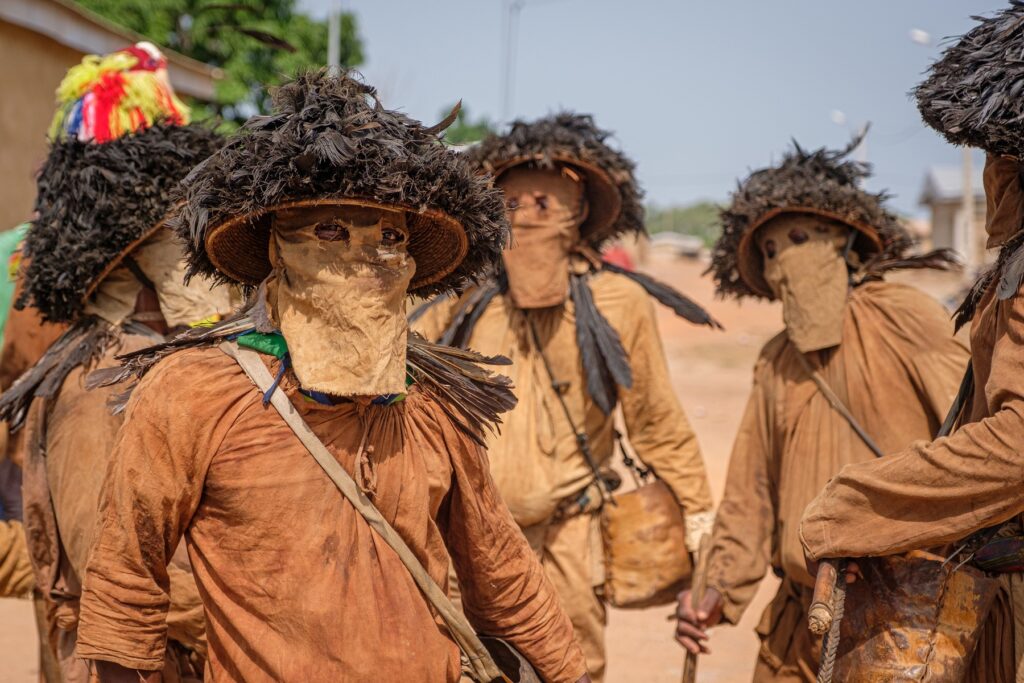
A final encounter with the traditions of the Poro came about purely by chance, when I spotted a group of masks out of the corner of my eye while passing through nearby Odienné. I stopped cautiously, but was permitted to watch the spectacle.
Another onlooker explains that it is a funeral procession for another group of Poro initiates – the masks, armed with guns carved out of wood and wearing feather hats, are mourning the deceased.
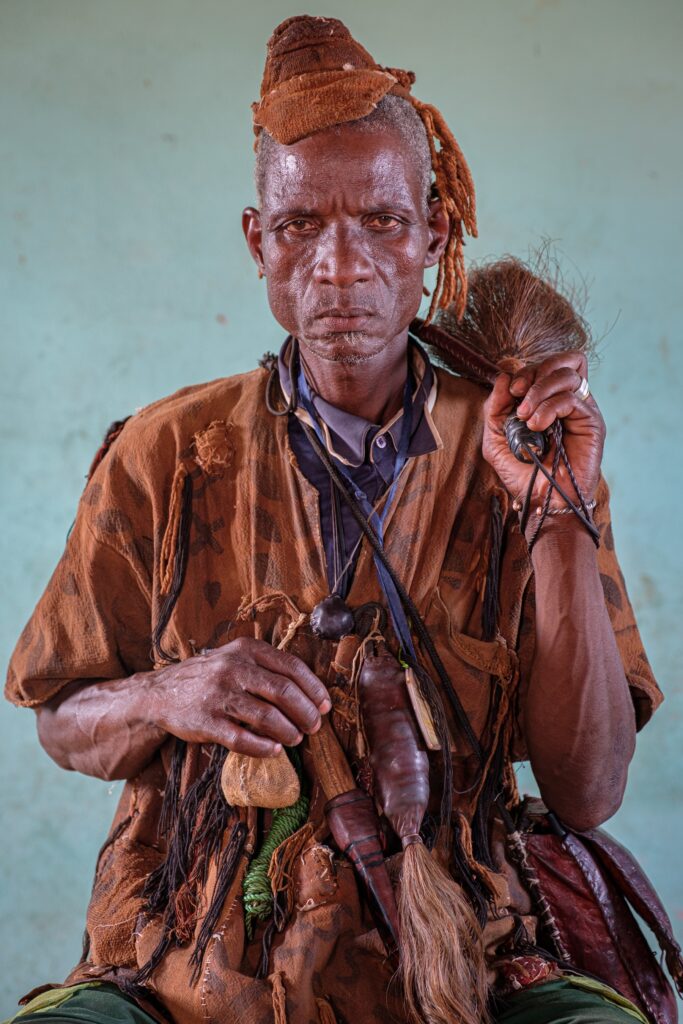
While in Odienné, I met the Kabadougou Dengelé Dozo brotherhood. The Dozo are the traditional hunters of northern Ivory Coast, whose role it is to keep their communities safe. They are also called upon to provide medical assistance or other help in case of need, and are even credited with healing powers.
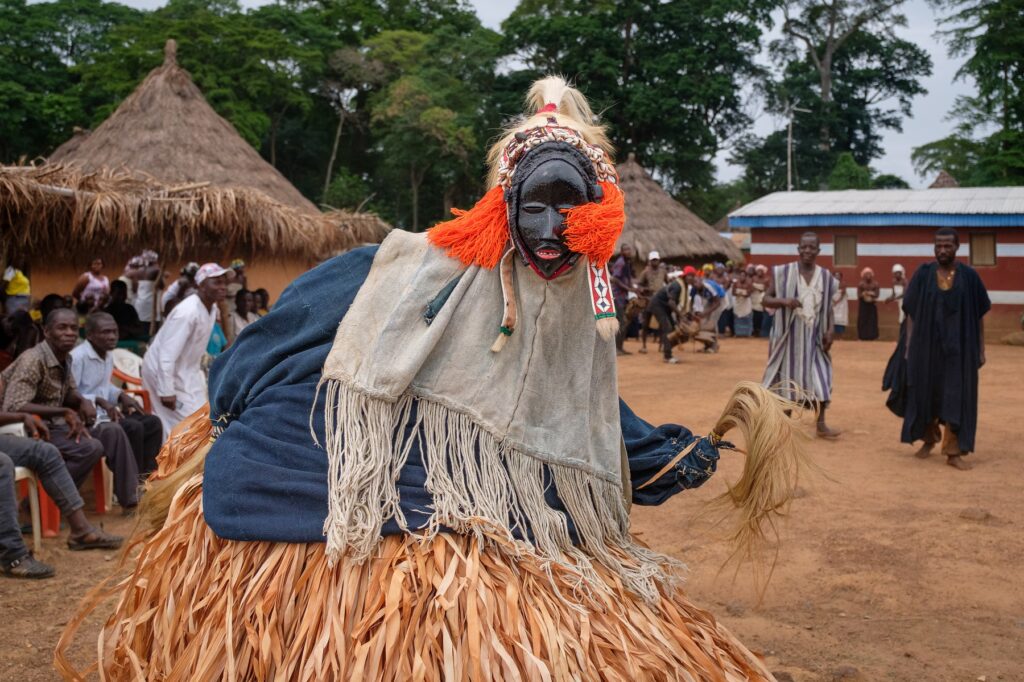
I move to a village of the Dan people, in the west of the country. Come the late afternoon, drums announce the arrival of the masks – and it doesn’t take long for the whole village to gather in the main square. The village elder explains the meaning of the performance: ‘The Gueblin masks dance to celebrate a good harvest and to protect the village from disease. That’s why there is no Corona here.’
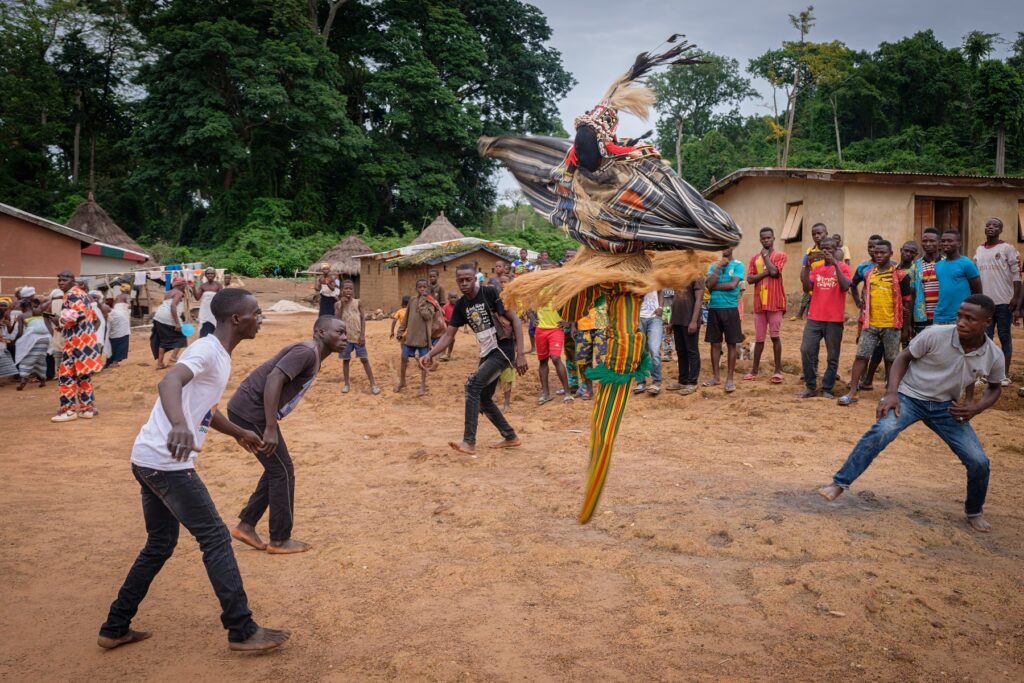
Shortly afterwards, the male mask storms through the village on stilts, while the female mask floats effortlessly over the sandy ground with complete elegance.
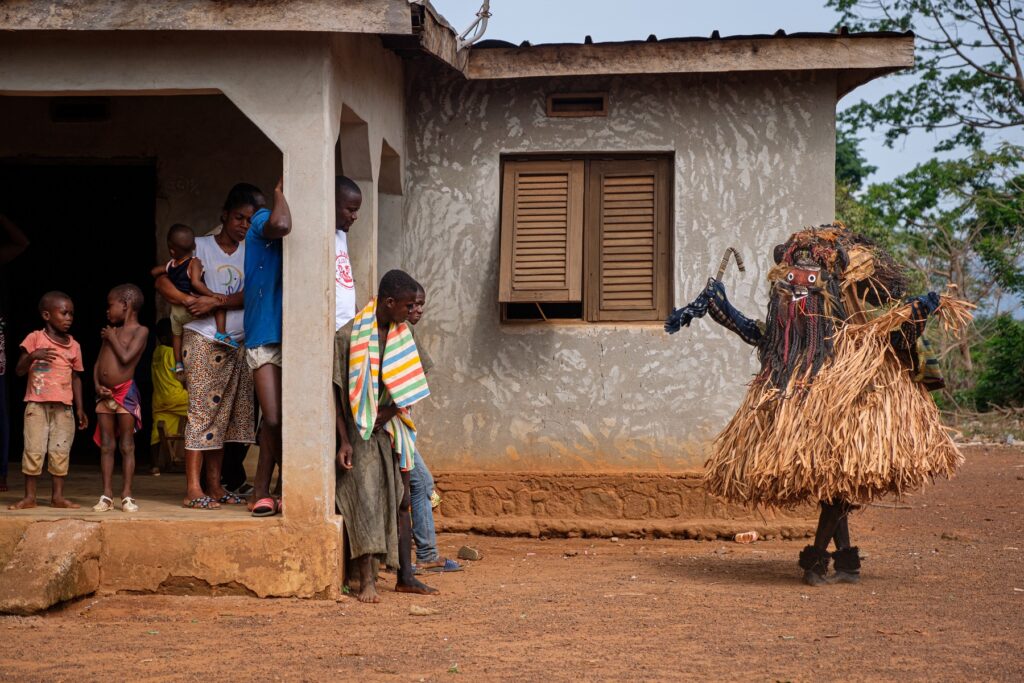
I make my way to Man, capital of the District des Montagnes, which is indeed hillier than the rest of the relatively flat country. Two days later I am invited to Guirouzo, a remote village of the Guéré people to admire and photograph their Gla masks.
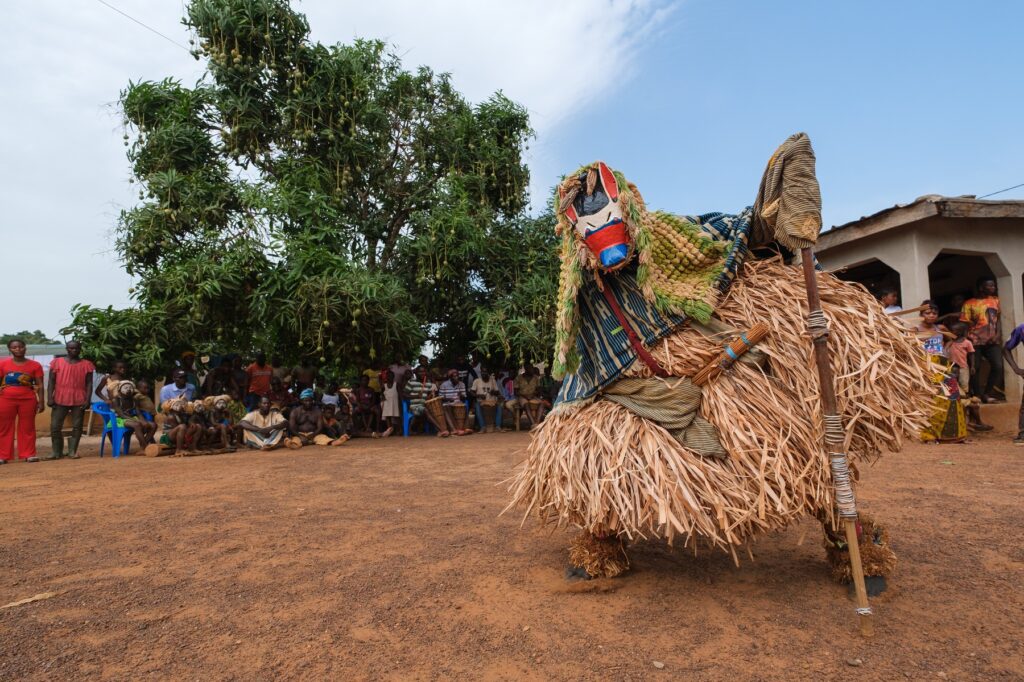
Here I learn the difference between dance masks – such as the funny, grinning, round, red-painted Douhe (pictured above) – and ambassador masks – such as the Gambiela (pictured here) which, artistically carved and brightly painted, is reminiscent of a dog.
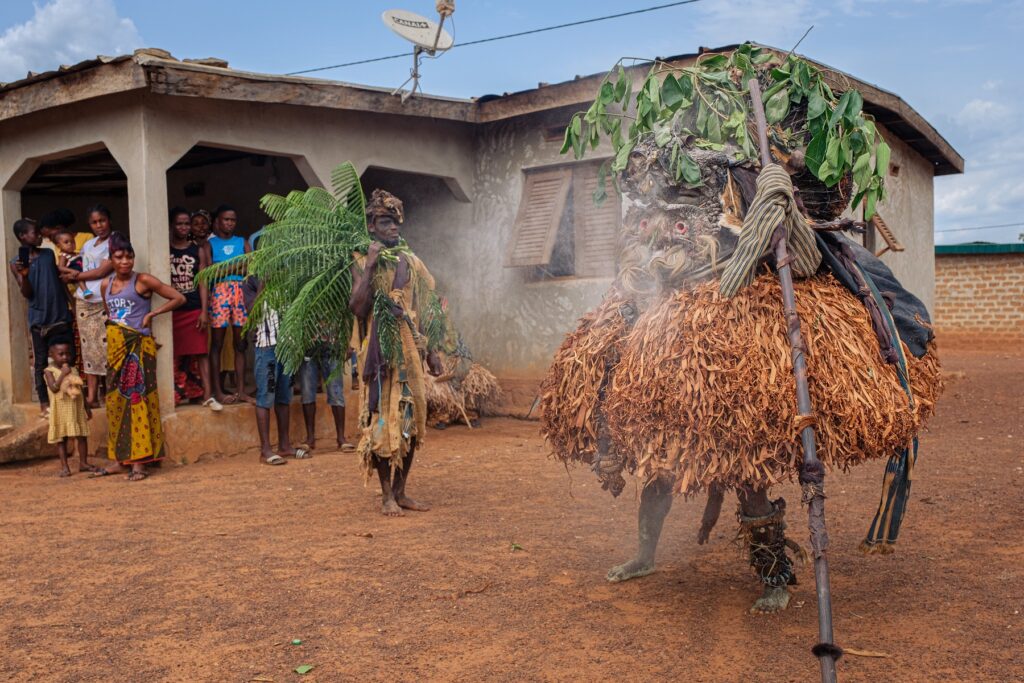
But what impressed me most were the war masks – huge, terrifying beasts which, armed with spears and emitting smoke, inspire courage in the village warriors in the event of conflict and are intended to guarantee a quick victory.
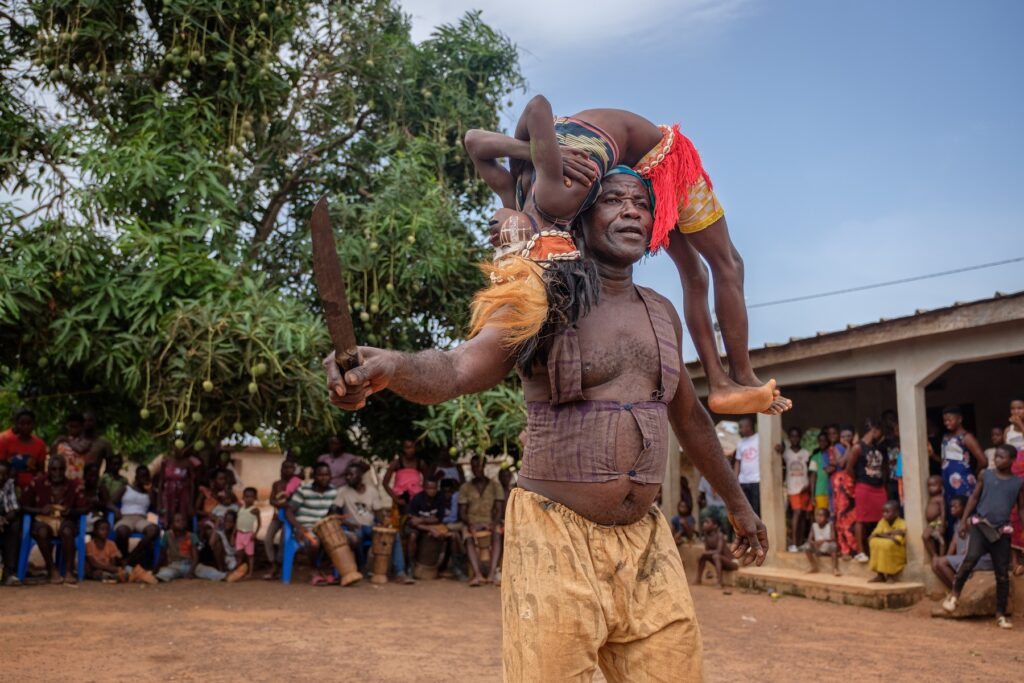
The Guéré also practise the age-old dance of the ‘Snake Girls’, where young girls, supposedly while in a trance, perform contortionist moves and are even thrown around by male adult performers. I am told this dance originates from the Dan people in neighbouring Liberia and is performed mostly for entertainment.
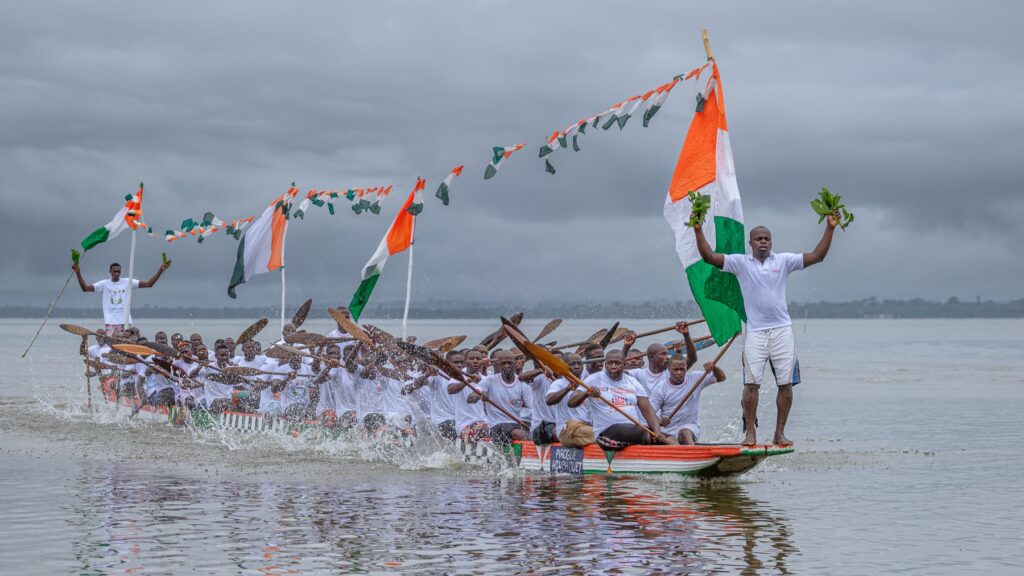
After a long drive, I return to the country’s east to attend the annual Samandjé Festival in the Agni village of Aby. The star of this event is a 25m-long dugout canoe that is launched on the lagoon only once a year and can hold up to 100 paddlers.
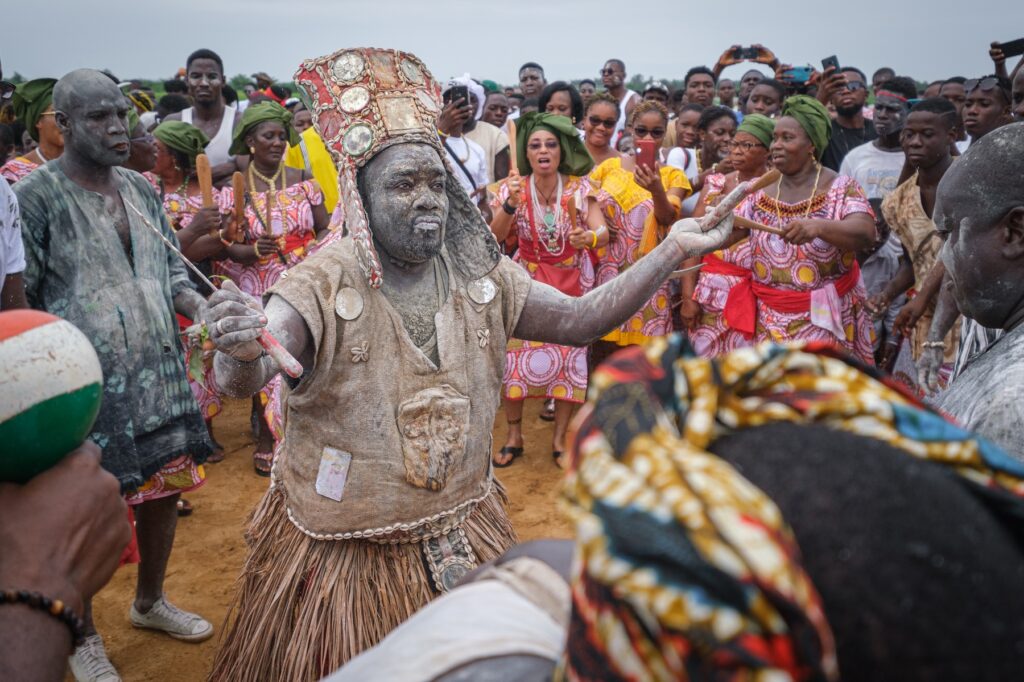
One important Easter celebration that takes place in Moossou, not far from Grand Bassam in the southeast, is the Generation festival of the Abouré who, like the Agni, belong to the Akan group. The festival celebrates different age groups across the community, along with their elected leaders.
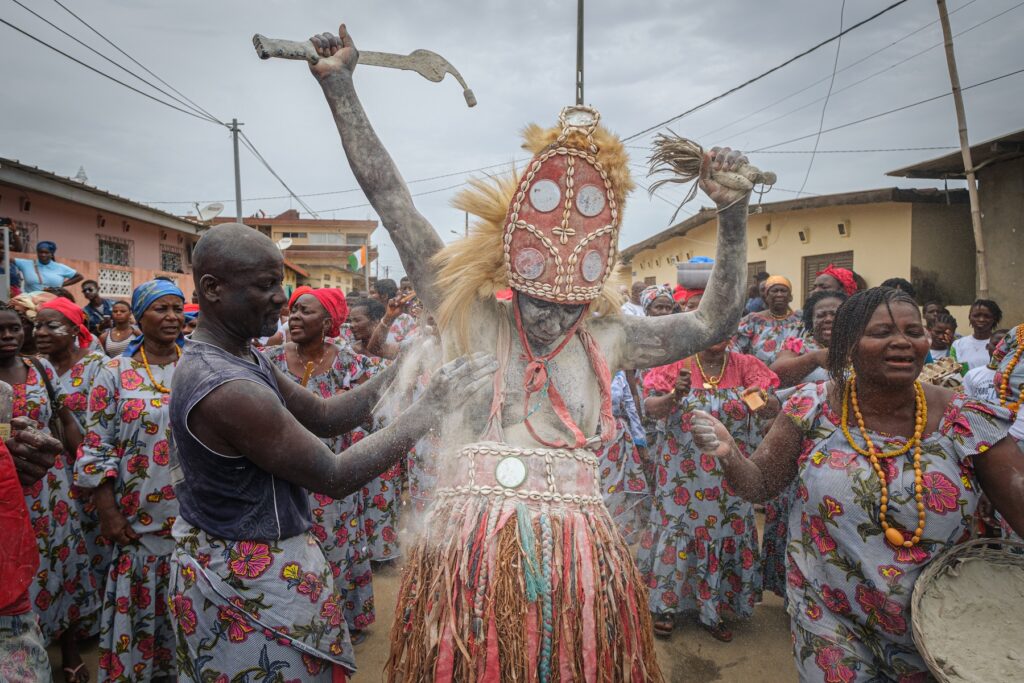
The highlight of the day involves the four sanflan (warrior chiefs) parading through the town’s streets and performing mystical war dances. They are covered in kaolin, a sacred white powder, and cheered on by women who wear dresses made especially for the occasion.
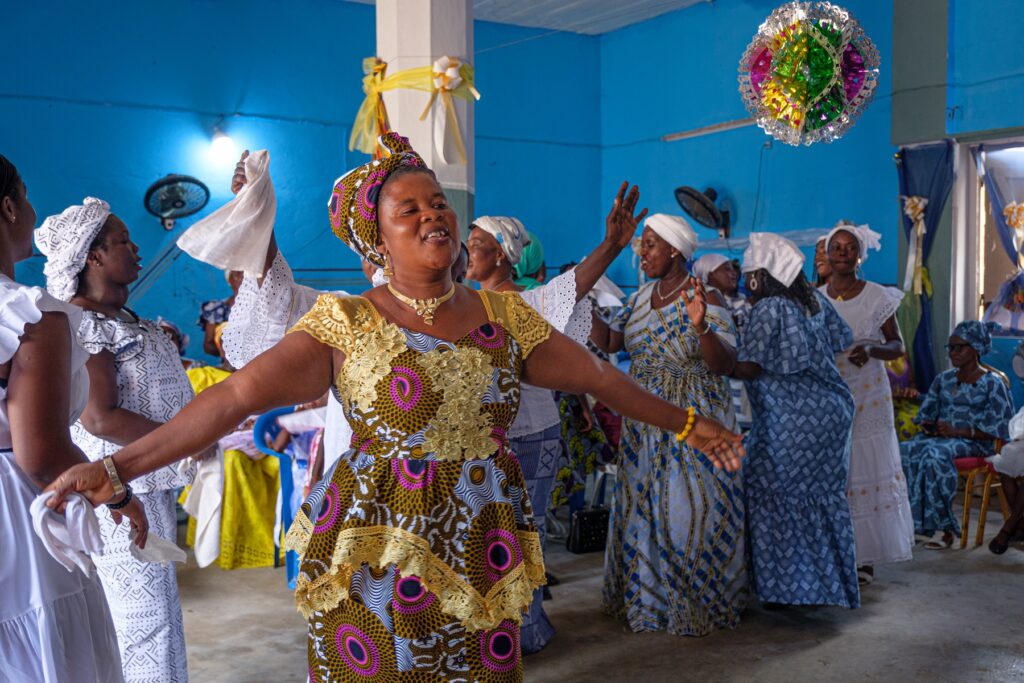
The anthropological diversity of Ivory Coast is baffling. Age-old African customs, ancient beliefs, Muslim and Christian influences, and numerous tribes with their own distinctive traditions all contribute to an unparalleled mix of cultures.
Mass tourism is positively non-existent and travelling the country is not always easy, but a knowledgeable local guide – such as Francis (pictured here), my trusted companion for the time of this trip – helps massively when it comes to getting access to the communities that make up the heart and soul of the country. I am already longing for more – West Africa will definitively see me again!
More information
For more pictures of Laurent’s adventures, follow him on Instagram or visit his website. You can find out more about Ivory Coast in our guide.
This piece was originally published in The Travel Club, a monthly members-only e-zine from Bradt Guides. To sign up from just £5 a month, which includes access to the magazine and 50% off all Bradt guides, click here.